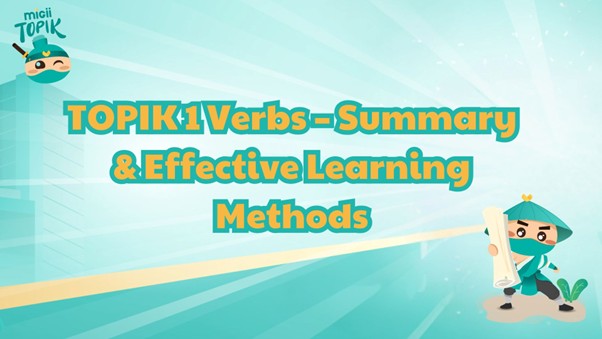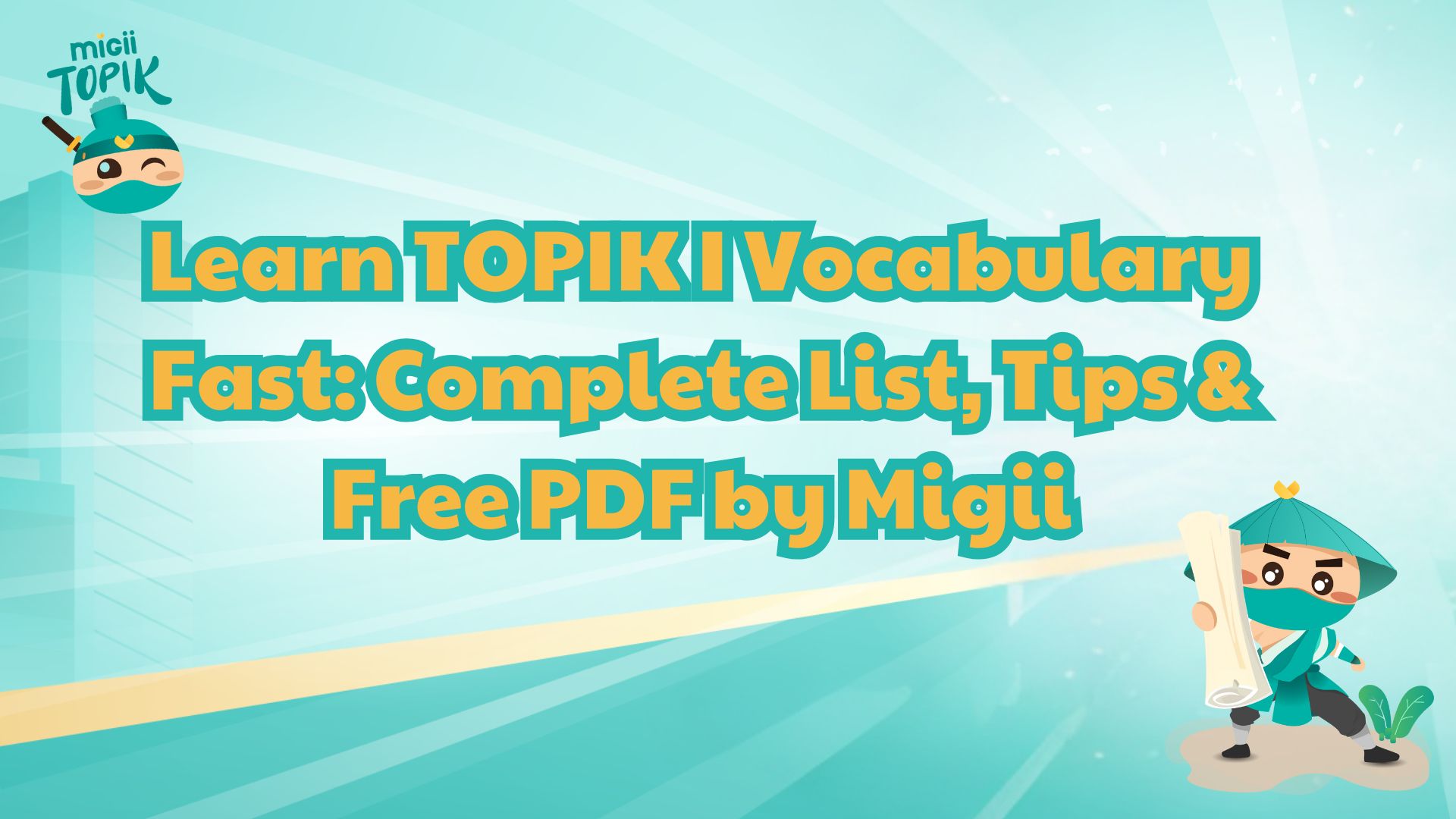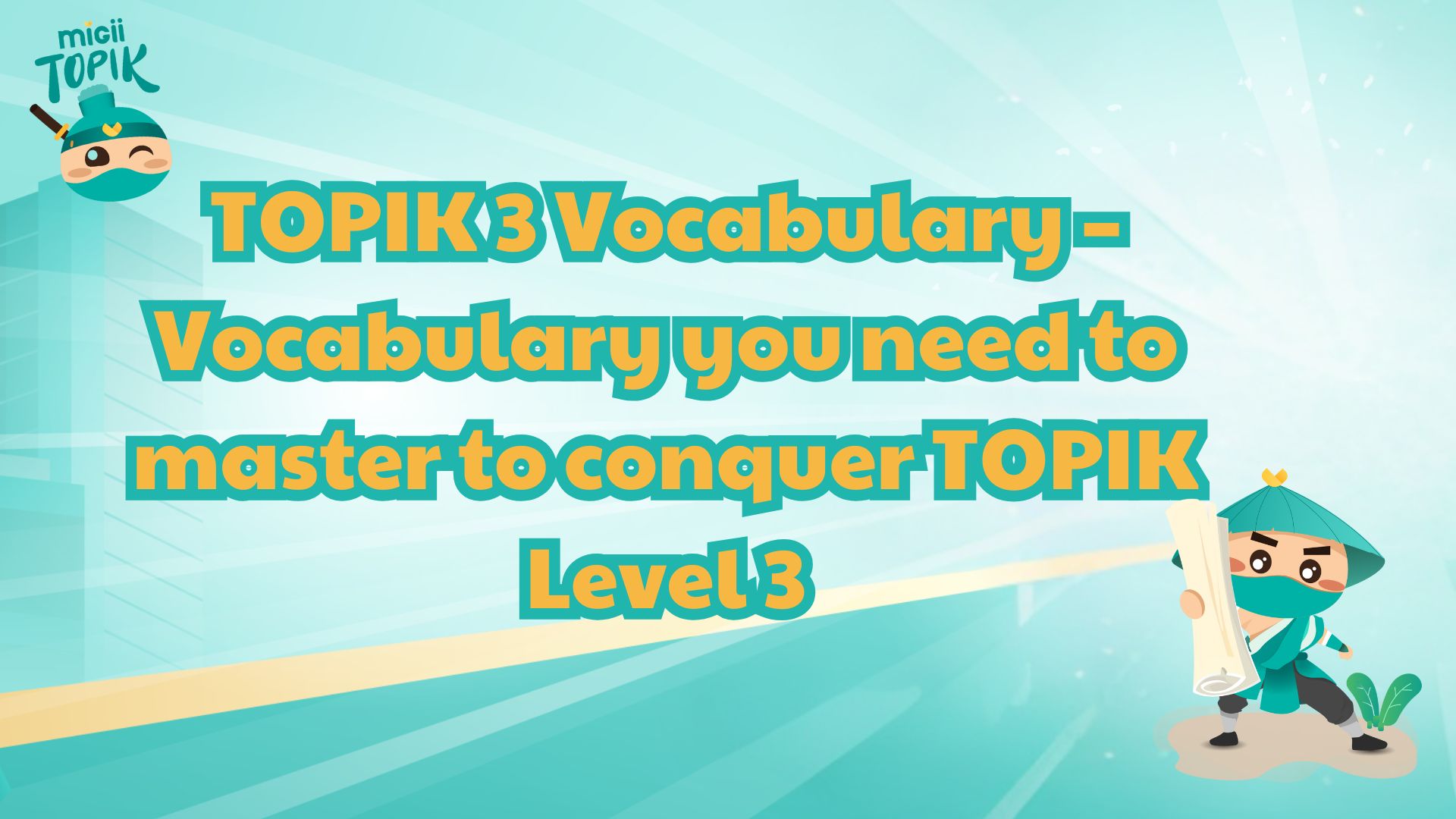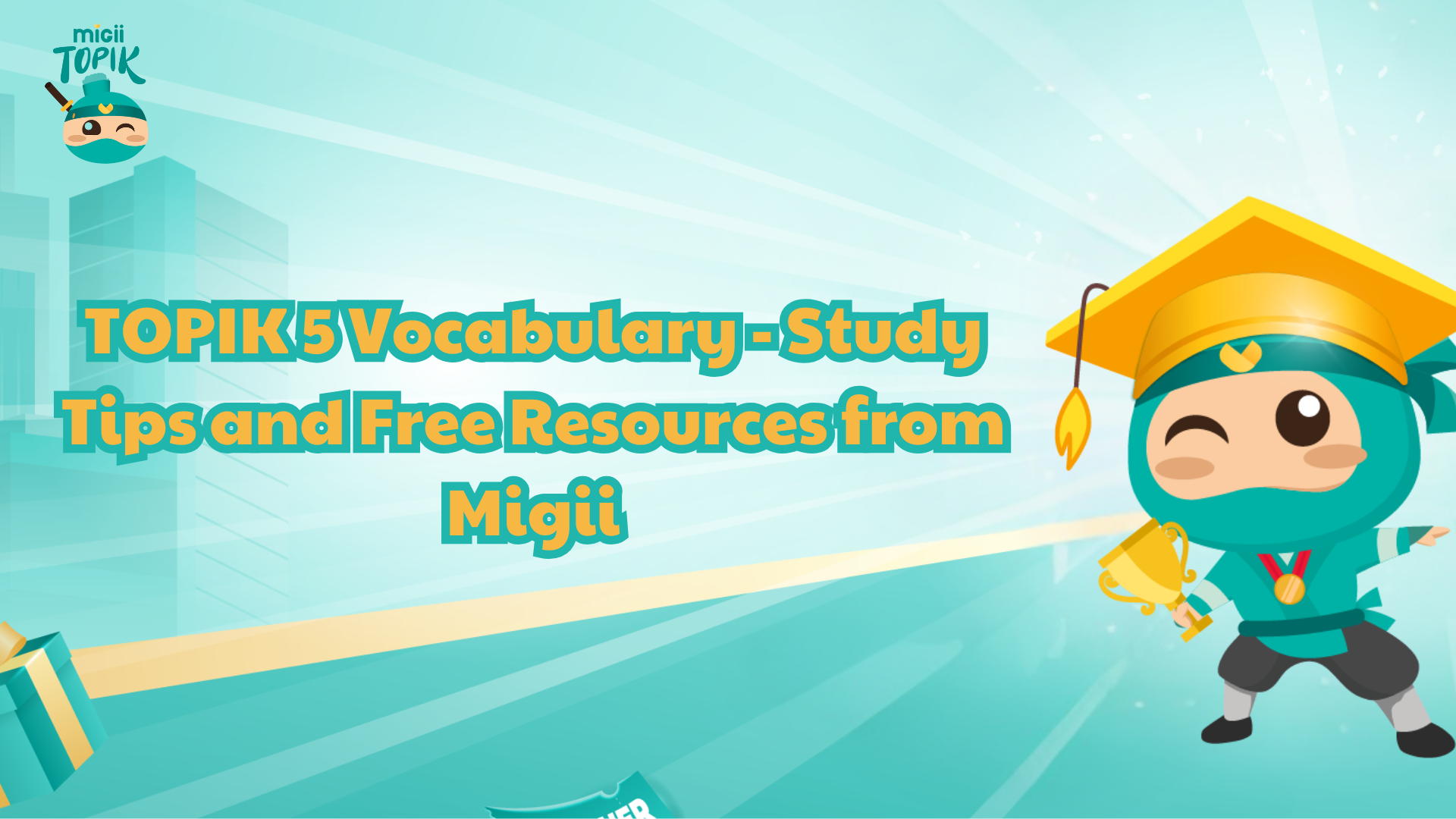If you’re preparing for the TOPIK (Test of Proficiency in Korean), mastering the TOPIK II vocabulary is one of the most important steps to achieving a high score. A strong vocabulary foundation helps you read confidently, write with precision, and understand complex grammar and expressions. In this guide, we’ll explore the Korean TOPIK 2 vocabulary, share effective study methods, and provide access to the TOPIK vocabulary list PDF and downloadable resources to help you study smarter and faster.

TOPIK II Vocabulary
Why You Need to Master the TOPIK II Vocabulary
For learners aiming to achieve TOPIK levels 3 to 6, building a strong and diverse vocabulary base is absolutely essential. The TOPIK II vocabulary list contains thousands of words that appear repeatedly across all sections of the exam from reading comprehension and listening passages to essay writing and grammar questions. These are not just random words; they represent the language skills needed to function confidently in academic, professional, and real-world settings.
Unlike the beginner levels of TOPIK I, where you mostly encounter everyday phrases like greetings, shopping vocabulary, or basic verbs, TOPIK II vocabulary focuses on more advanced and abstract concepts. You’ll come across words related to society, culture, economics, technology, and environmental issues, all topics that often appear in the intermediate and advanced exam sections.
By mastering these higher-level words, you can:
- Understand complex reading passages faster and more accurately. You’ll be able to recognize key terms, identify main ideas, and comprehend nuanced opinions in long articles and essays.
- Express your ideas clearly and precisely in writing. Expanding your vocabulary allows you to replace simple, repetitive words with richer and more sophisticated expressions, which is essential for scoring well in the essay section.
- Improve your listening comprehension and reaction speed. When you already know the words being used in the audio clips, you can focus more on meaning rather than trying to decode unfamiliar vocabulary in real time.
- Build confidence in real-world communication. A solid grasp of TOPIK II vocabulary means you can discuss social trends, workplace topics, and cultural issues with native speakers more naturally, an invaluable skill for studying, working, or living in Korea.
In short, mastering the Korean TOPIK 2 vocabulary isn’t just about passing an exam, it's about reaching a level of fluency that lets you use Korean effectively and confidently in any situation.
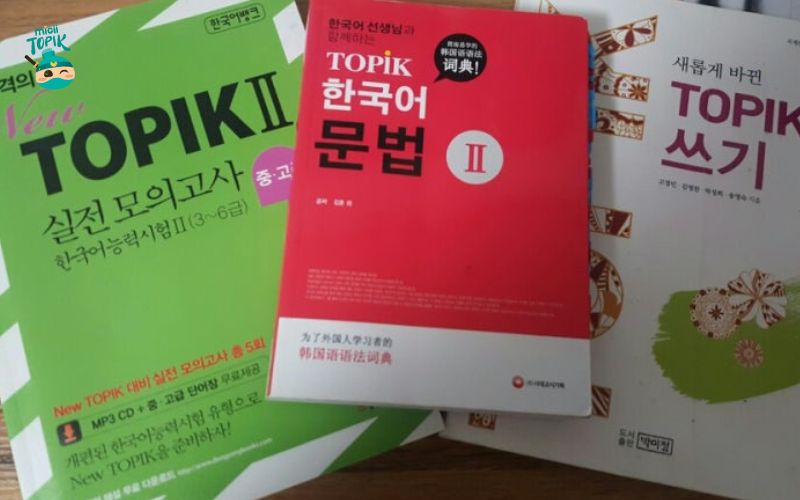
Why you need to master the TOPIK II vocabulary
Overview of the Korean TOPIK Vocabulary List by Level
The Korean TOPIK vocabulary list is one of the most valuable resources for learners preparing for the exam. It typically contains around 6,000 essential Korean words, systematically categorized across six proficiency levels, from beginner (TOPIK I) to advanced (TOPIK II). Understanding what each level focuses on can help you set clear learning goals and build your vocabulary more effectively.
Below is a detailed overview of what you can expect at each stage of the TOPIK vocabulary journey:
|
TOPIK Level |
Focus Area |
Example Words |
|
TOPIK 1 |
Focuses on basic daily expressions and simple communication used in everyday life. Learners are introduced to fundamental nouns, verbs, and adjectives related to self-introduction, family, food, and daily routines. |
학교 (school), 사람 (person), 음식 (food), 친구 (friend), 물 (water) |
|
TOPIK 2 |
Expands on vocabulary used for daily activities and social interactions. You’ll learn words related to shopping, transportation, and community life, helping you handle simple conversations in Korea. |
회사 (company), 시장 (market), 은행 (bank), 약국 (pharmacy), 버스 (bus) |
|
TOPIK 3 |
Moves into more complex vocabulary associated with workplaces, education, and cultural topics. This stage helps learners discuss personal experiences, hobbies, and opinions more naturally. |
직장 (workplace), 경험 (experience), 문화 (culture), 발표 (presentation), 준비 (preparation) |
|
TOPIK 4 |
Introduces academic and social vocabulary, allowing learners to discuss broader issues such as society, environment, and technology. You’ll start seeing words commonly used in news, essays, and formal discussions. |
사회 (society), 경제 (economy), 환경 (environment), 기술 (technology), 발전 (development) |
|
TOPIK 5 |
Focuses on professional and abstract concepts often used in workplaces or academic contexts. Learners at this level can understand articles, debates, and reports with more complex sentence structures. |
분석 (analysis), 지원 (application), 협력 (cooperation), 전략 (strategy), 연구 (research) |
|
TOPIK 6 |
Covers advanced academic and literary vocabulary, preparing learners for near-native fluency. You’ll encounter nuanced terms and idiomatic expressions that are common in professional writing and academic discussions. |
제안 (proposal), 통계 (statistics), 관점 (perspective), 논의 (discussion), 비판 (criticism) |
Each level builds on the one before it, gradually introducing more sophisticated language and helping learners transition from basic conversation to professional communication and academic writing.
To support your preparation, you can easily download the full TOPIK Korean vocabulary list PDF or the Korean TOPIK II vocabulary PDF online. These structured lists are perfect for both organized study sessions and offline practice, allowing you to review and memorize vocabulary at your own pace.
By studying systematically according to your level, you’ll not only expand your vocabulary efficiently but also strengthen your overall reading, writing, listening, and speaking skills for the TOPIK exam.
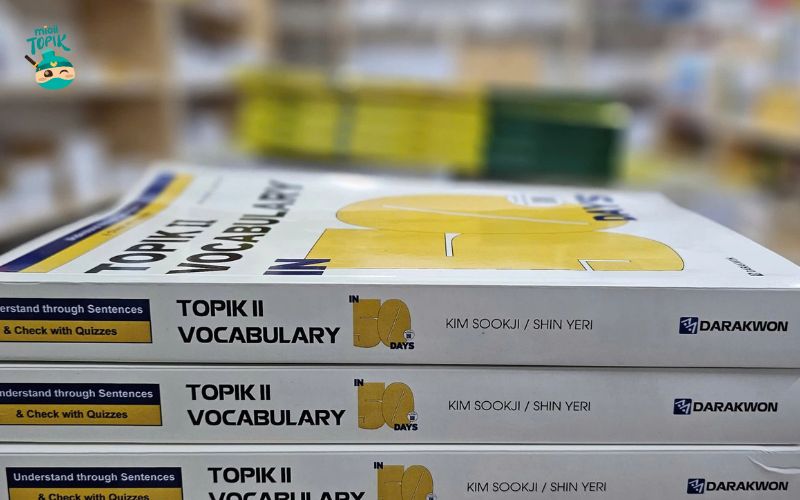
Overview of the Korean TOPIK vocabulary list by level
Effective Study Methods for TOPIK II Vocabulary
Learning vocabulary for TOPIK II can feel like climbing a mountain of thousands of new Korean words, idioms, and expressions to memorize and apply across reading, writing, and listening sections. However, with the right strategies, you can make the process structured, efficient, and even enjoyable. Below are some proven methods to help you master the TOPIK II vocabulary list and achieve higher scores.
Learn Vocabulary by Topic and Context
One of the biggest mistakes learners make is trying to memorize random words in isolation. A more effective approach is to study vocabulary by theme or context, as this helps your brain make meaningful associations. Grouping words by topic allows you to recognize how they are used in real-life communication and in the TOPIK exam.
For example, divide your study sessions into categories such as:
- Environment – 환경 (environment), 보호 (protection), 재활용 (recycling), 오염 (pollution)
- Politics – 정부 (government), 정책 (policy), 국민 (citizen), 선거 (election)
- Technology – 기술 (technology), 인공지능 (AI), 데이터 (data), 인터넷 (internet)
- Society – 변화 (change), 문제 (problem), 발전 (development), 협력 (cooperation)
Once you’ve learned 10–15 new words from a theme, try writing short paragraphs or diary entries using those words. For instance, write a short passage about how “AI is transforming modern society” or “how recycling benefits the environment.” This approach reinforces both your vocabulary memory and your ability to use the words naturally in writing a skill that’s vital for the TOPIK II Writing section.
You can also practice by discussing these topics aloud or summarizing short news articles in Korean. This builds confidence and helps you recall the words faster during the exam.
Use Flashcards and Spaced Repetition Tools
Flashcards are one of the oldest and most effective ways to learn vocabulary, especially for exams like TOPIK II. Whether you prefer physical cards or mobile apps, flashcards help you engage in active recall, the process of remembering information from memory instead of just rereading it.
To make your flashcards truly effective, include:
- The Korean word (e.g., “분석”)
- The Romanization and meaning (“bunseok – analysis”)
- A sample sentence (“이 보고서는 데이터를 분석한 결과입니다.” – This report shows the results of data analysis.)
Combine your flashcards with a spaced repetition system (SRS). This scientifically proven technique prompts you to review words just before you forget them, which dramatically boosts long-term retention.
Recommended tools:
- Anki: Ideal for learners who want full control over deck customization.
- Migii or Quizlet: Great for learners who prefer ready-made decks and interactive exercises.
Study tip: Instead of cramming for hours once a week, spend 20–30 minutes daily reviewing a small set of flashcards. Regular, short sessions help your brain absorb and retain vocabulary more effectively than long, irregular study marathons.
Apply Vocabulary in Real Exam Contexts
Memorizing words is only half the journey; the real challenge is applying them naturally in exam-style situations. Practicing in realistic contexts will help you recall and use vocabulary more effectively under pressure.
In the Reading Section:
- Regularly read past TOPIK II test papers, Korean news articles, or essays.
- Underline or highlight unfamiliar words, and try to guess their meanings from context before checking a dictionary.
- Focus on academic or topic-related words such as 사회적 문제 (social issue), 경제 성장 (economic growth), or 교육 제도 (education system)
- After reading, summarize each paragraph in Korean using your own words. This reinforces comprehension and vocabulary retention.
In the Writing Section:
- Replace basic or repetitive words with higher-level expressions:
- 좋다 → 유익하다 (beneficial)
- 문제 → 이슈 / 과제 (issue / task)
- 도와주다 → 지원하다 (support)
- Incorporate linking expressions like 따라서 (therefore), 반면에 (on the other hand), 게다가 (in addition), and 결국 (in the end) to make your writing flow more naturally.
- Practice rewriting one past TOPIK II essay using at least 15 - 20 advanced words from your study list. This exercise not only expands your vocabulary range but also improves your ability to express complex ideas coherently, a key factor for achieving higher TOPIK II scores.
You can also record yourself reading your essays aloud. This helps reinforce pronunciation, improve fluency, and make your study sessions more interactive.
Final Tip: Combine Consistency with Exposure
To truly master the TOPIK II vocabulary list, consistency is key. Try to immerse yourself in Korean daily, read news headlines, listen to podcasts, watch talk shows, and note down new words. Exposure to real-world Korean helps bridge the gap between memorized vocabulary and actual usage.
Over time, you’ll find yourself naturally recognizing and recalling words during the exam. With steady practice, smart tools, and contextual learning, mastering the TOPIK II vocabulary is not just possible, it’s achievable and rewarding.
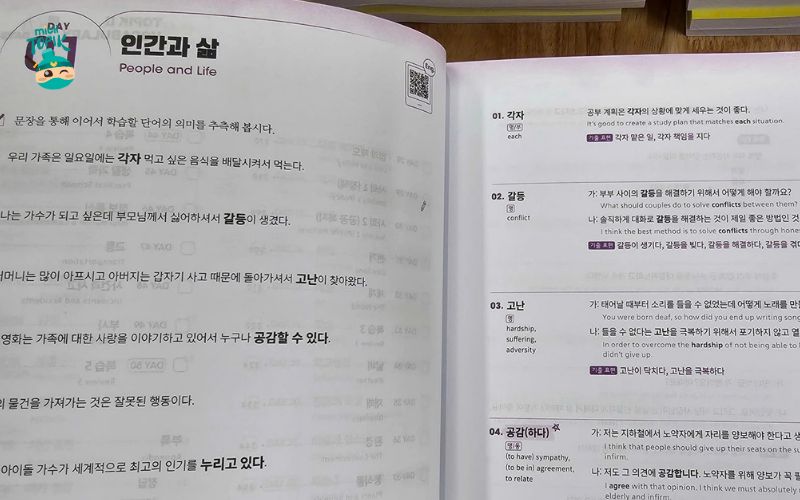
Effective study methods for TOPIK II vocabulary
Download the Complete TOPIK Vocabulary List
Preparing for the TOPIK exam becomes much easier when you have the right study materials organized in one place. To help you build a structured learning routine, you can now download the complete TOPIK vocabulary list (PDF & Excel) , a well-organized resource covering all essential Korean words from beginner to advanced levels.
These downloadable files are carefully categorized by level (TOPIK I and TOPIK II), topic (such as environment, society, technology, and culture), and frequency of appearance in past exams. Whether you’re studying on your own or using them in a classroom setting, these resources are designed to make your vocabulary learning more systematic and efficient.
Download the TOPIK II Vocabulary List PDF by Migii
Get instant access to a comprehensive, well-organized vocabulary list designed to help you prepare effectively for the TOPIK II exam.
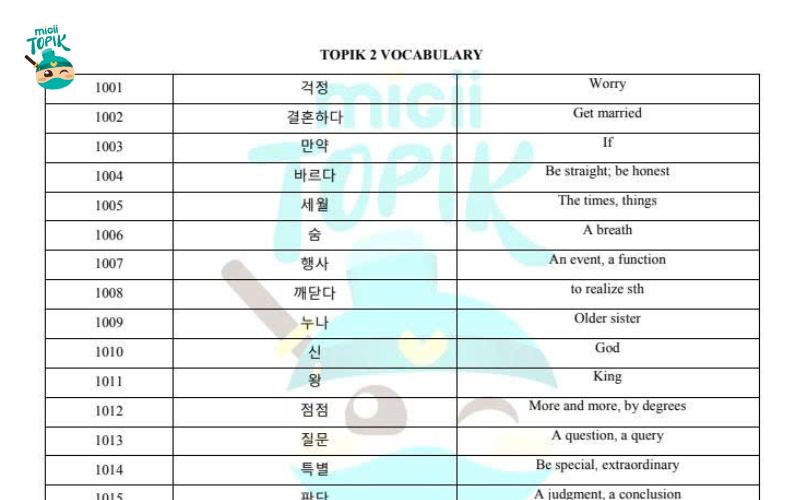
TOPIK II vocabulary list PDF by Migii
Frequently Asked Questions
1. How long does it take to learn the TOPIK II vocabulary?
The time it takes to master the TOPIK II vocabulary depends largely on your study routine, consistency, and learning methods.
On average, most learners can effectively memorize and apply around 6,000 Korean vocabulary words within six to twelve months. For faster progress, create a structured plan that includes:
- Studying 15–20 new words daily.
- Reviewing past words using spaced repetition tools like Migii or Anki.
- Applying new vocabulary in short essays, speaking exercises, and mock tests.
Remember, steady, consistent study sessions (20–30 minutes per day) are more effective than long but irregular cramming sessions.
2. Is learning 6,000 words enough to pass TOPIK II?
Building a strong vocabulary base is crucial for achieving high scores on the TOPIK II exam, especially for levels 5 and 6. However, vocabulary alone isn’t enough.
You’ll also need to develop well-rounded Korean language skills, including:
- Grammar mastery – to construct accurate and sophisticated sentences.
- Listening comprehension – to understand fast, natural Korean conversations.
- Reading and writing practice – to apply advanced words correctly in essays and comprehension questions.
When combined with regular vocabulary review, balanced practice across all language skills gives you the best chance of success in the TOPIK II test.
3. Where can I find reliable study materials for TOPIK II vocabulary?
There are several excellent resources available to help you prepare for the TOPIK II vocabulary list:
- Migii App & Website: Offers interactive flashcards, practice quizzes, and downloadable TOPIK II vocabulary list PDFs organized by topic and level.
- TOPIK One: Provides sample exams and categorized Korean TOPIK vocabulary PDFs for guided study.
- Online resources & textbooks: Many language learning platforms and Korean publishers provide TOPIK 2 vocabulary lists and printable materials for offline study.
Using a mix of digital tools and printed lists ensures a well-rounded, effective learning experience.
Mastering the TOPIK II vocabulary is the foundation for achieving high scores in the Korean proficiency exam. By learning words in context, practicing with flashcards, and applying them in real exam scenarios, you can strengthen every aspect of your Korean communication skills. With the Migii TOPIK II Vocabulary List PDF and Korean TOPIK 2 Vocabulary PDF available for download, learners can access a complete, structured study system tailored to every level. Migii TOPIK provides smart tools like spaced-repetition flashcards, mock tests, and progress tracking helping you study efficiently and retain vocabulary longer.
